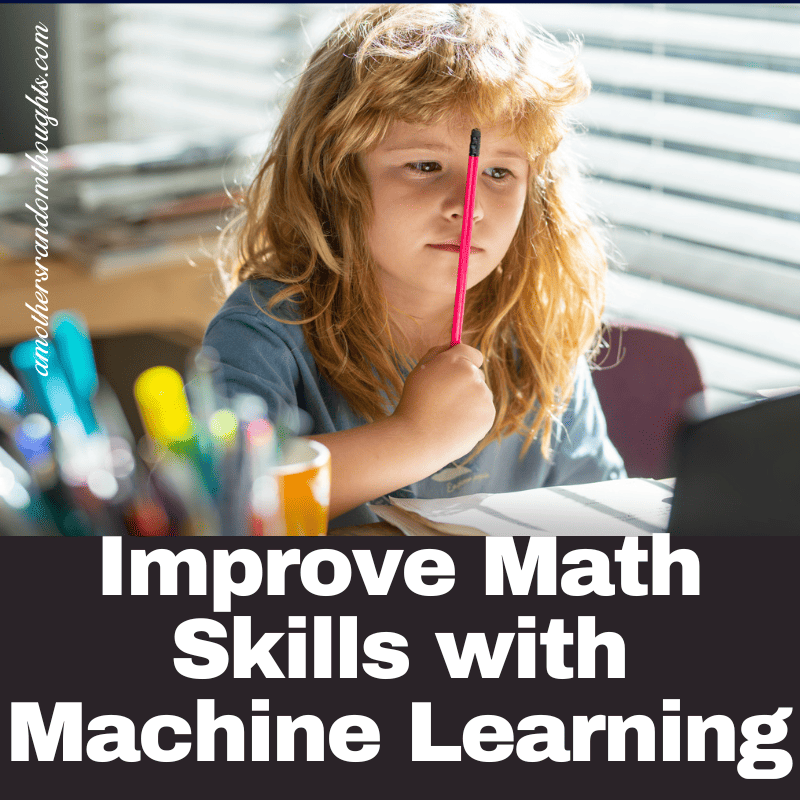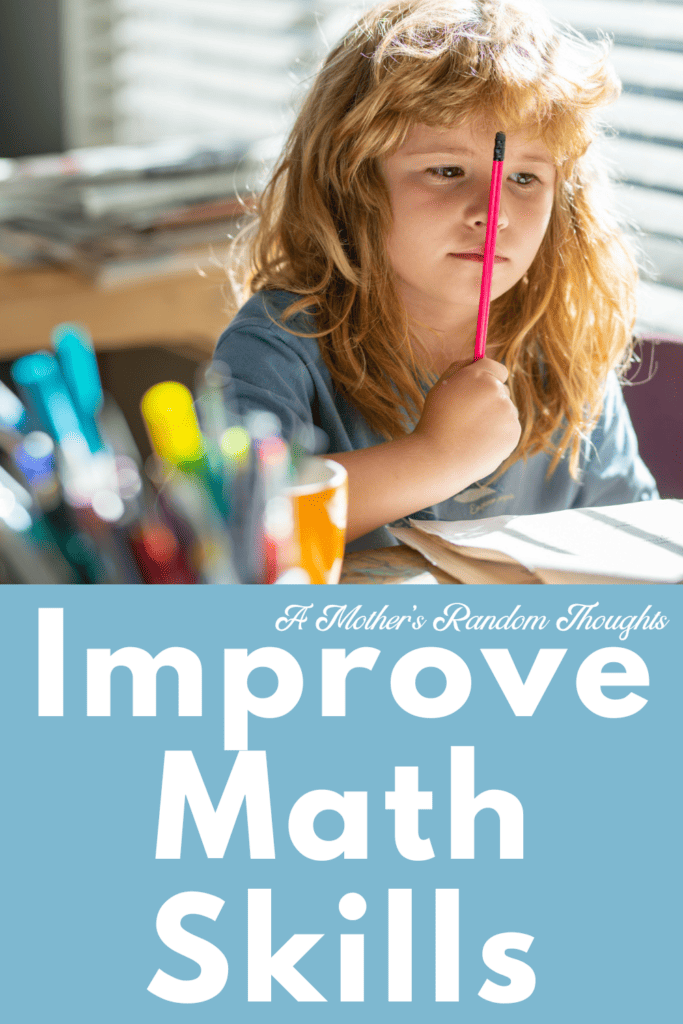Use ML programs to impove math skills
Mathematics is the language of the universe, the bedrock upon which the edifice of our modern world stands. Its essence and principles resonate with every aspect of life, be it commerce, art, or even the very code that governs our digital existence. Yet, the education and mastery of this vital subject remain an elusive goal for many. Enter Machine Learning (ML), a cutting-edge field that has the potential to revolutionize how we approach, learn, and ultimately conquer mathematics. We will talk about the use of machine learning to improve math skills.

The Difference Between AI and ML
Before we delve into Machine Learning, let’s talk about the difference between ML and Artificial Intelligence (AI).
Artificial intelligence (AI) is a broad term for computer software that emulates human intelligence. AI encapsulates ML. Machine learning uses algorithms to learn from data and make predictions.
The following math concepts are utilized in machine learning:
Linear algebra and probability theory provide the framework for machine learning algorithms.
Statistical concepts help machine learning make decisions based on the data.
Calculus helps form the functions that train calculus.
As you can see, a deep understanding of math is needed as we head into the future. This means that students will need to study more math subjects and higher levels of math than ever before.

Understanding the Need for a New Approach
In an ever-evolving world, our methods of education must also transform. Traditional classroom learning may fall short in inspiring young minds, leaving them intimidated or bored with math. A dynamic, engaging, and nurturing approach is the need of the hour. Online courses are able to engage a student in a great way that a traditional classroom cannot.
Wonder Math, a pioneering online math program in this arena, understands this need like no other. It is the only math program developing mathematical thinkers by teaching through active learning in the context of a story. By making math fun, relevant, and easy to understand, Wonder Math is shaping the future of education. It doesn’t stop at just educating; it cares for your child’s well-being, instilling a positive attitude toward math and building their confidence in topics they face at school.
The target age range for Wonder Math, 7 to 11, is a critical time when children form their foundational attitudes and abilities in mathematics. This phase is essential in molding brighter, more hardworking, resilient, and independent adults prepared to achieve a lifetime of advantages.
Machine Learning: Bridging the Gap
But what role does machine learning play in this beautiful tapestry of mathematics education? And how can it synergize with programs like Wonder Math to make learning more effective? The answer lies in personalization, prediction, and perfection.
Personalization
Machine learning algorithms can analyze students’ learning patterns, weaknesses, and strengths. By understanding how a student approaches mathematical problems, these algorithms can tailor lessons and exercises that suit their unique learning curve.
Wonder Math’s approach could benefit from these personalized learning paths. Machine learning can fine-tune the story-driven teaching methodology, aligning it more closely with the student’s pace, interests, and areas that need strengthening. This personal touch can make the learning experience more enjoyable and rewarding.

Prediction
The predictive capabilities of machine learning can foresee a student’s performance based on their learning history and patterns. This foresight can guide educators and parents to intervene proactively rather than reactively, offering support at the right time.
Imagine the power of knowing in advance where your child might struggle and having the tools to help them overcome those hurdles. Programs like Wonder Math can integrate predictive analytics to enhance their ability to foster mathematical competency at those crucial developmental stages.
Perfection
Machine learning’s iterative learning process seeks perfection. It adapts, learns, and improves, creating a cycle of continuous enhancement. By applying this philosophy to the field of mathematics education, we can create a system that evolves with our children, offering them a progressively enriched learning experience.
Wonder Math, with its dedication to active learning, could reach new heights of effectiveness by embracing machine learning. The synergy between these two could create a learning environment that doesn’t just teach math but crafts mathematical thinkers, empowered and enthusiastic about their mathematical journey.
Protecting Well-Being and Building Confidence
Wonder Math’s approach also focuses on the emotional and psychological aspects of learning. By building confidence in math topics at school and ensuring that learning is engaging and enjoyable, they are creating a robust support system for children. Machine learning can augment this by offering insights into a child’s emotional responses to various learning materials, enabling an even more nuanced and sensitive approach.
Conclusion: A Brighter Future
The integration of machine learning into mathematics education heralds a future full of potential and promise. Programs like Wonder Math, dedicated to nurturing not just skills but thinkers, stand at the forefront of this educational revolution.
Machine learning’s capacity to personalize, predict, and seek perfection is not merely a technological advancement. Additionally, it is a paradigm shift in how we perceive and approach education. It is about recognizing that every child is unique and deserves an education crafted just for them. It’s about transforming mathematics from a daunting subject into a delightful adventure.
Wonder Math is an excellent example of how this revolution is taking shape, by making math fun, relevant, and easy to understand, all while protecting your student’s well-being. With the power of machine learning at its side, it can set the stage for a brighter, more resilient generation, ready to explore, understand, and conquer the mathematical universe.
After all, the marriage of technology and education is not just a possibility; it’s an exciting reality. And it sounds great, doesn’t it?
Frequently Asked Questions:
What is the difference between machine learning and data science?
Both data science and machine learning are mathematical concepts that fall within the field of technology. However, data science studies data and how to extract meaning, while ML builds methods to utilize the data to make predictions or improve outcomes.
What is the difference between machine learning and deep learning?
Deep learning is a subset of machine learning that creates an “artificial neural network” that can learn and make intelligent decisions on its own. Machine Learning needs human interaction while deep learning does not.
Will Machine Learning eliminate the need for a data scientist?
It is unlikely that machine learning will fully replace data scientists. While AI and data science work together to solve problems, and machine learning tools can automate some aspects of data analysis, it is doubtful that it will be able to perform as humans any time soon.
What is the difference between artificial neural networks and convolutional neural networks and recurrent neural networks?
ANNs (Artificial Neural Networks) are great for complex problem solving skills.
CNNs (Convolution Neural Networks) are a type of ANN and are best for solving Computer Vision-related problems.
RNNs (Recurrent Neural Networks) are proficient in Natural Language Processing and use sequential data.


Reviewing movies for parents from a Christian perspective since 2005. Know Before You Go!
Christian Homeschooling mom – 30 years and counting
Autism Mom & Disney enthusiast
